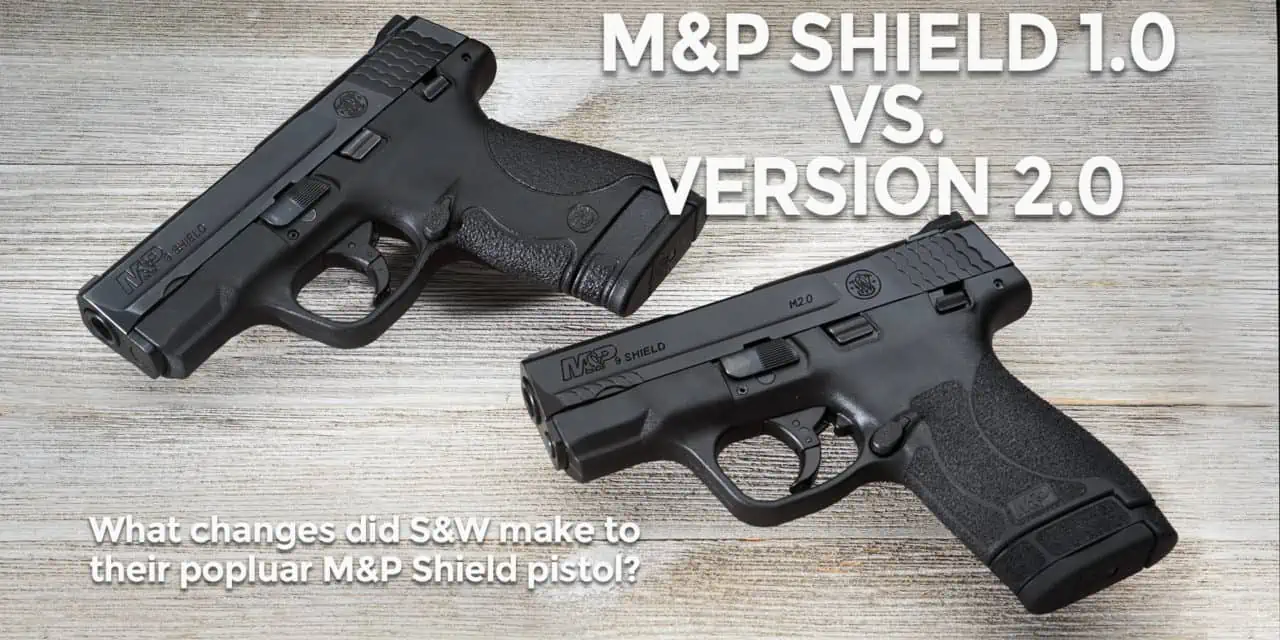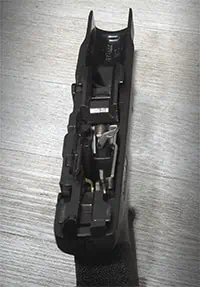Smith & Wesson M&P Shield 1.0 vs. Shield 2.0
The Smith & Wesson M&P Shield has been one of the more popular pistols introduced in recent years. According to Smith and Wesson, over one million copies of the M&P Shield have been sold, and it’s easy to see why. Slim, trim and subcompact, it’s very easy to carry on a day in, day out basis. In fact, a 9mm Shield Version 1.0 has been my daily carry gun for years now. More than a carry gun, I’ve shot it in training classes and also in competition. I know what this gun can and can’t do. While my version 1.0 model has been a workhorse for me, a few years ago, Smith and Wesson introduced a 2.0 model of the Shield, and I was curious to see what the differences were between Shield model 2.0 and the 1.0 version.
So What’s Changed Between The Versions?
On their website, Smith & Wesson lists the upgrades that they’ve included with the Shield 2.0. The features of the new Shield 2.0 are:
- Incorporates the design features of the M&P M2.0 line of firearms.
- Aggressive grip texture for enhanced control.
- New M&P M2.0 crisp trigger with lighter trigger pull.
- Tactile and audible trigger reset.
- Extremely thin and lightweight – can be comfortably carried all day.
- M&P’s patented take-down lever and sear deactivation systems allow for disassembly without pulling the trigger.
- Includes 2 magazines:
- One 7-round magazine.
- One 8-round extended grip magazine.
- Armornite® durable corrosion resistant finish.
External Differences
Smith & Wesson wasn’t kidding about the “aggressive grip texture.” The stippling on the frame of the newer version is much more pronounced and covers much more of the frame than the older model. While the texturing is more pronounced, it’s not too rough to hold onto during an extended range session. Unlike the first version, the stippling wraps around the entire lower frame of the gun, and even extends down the extended basepad of the 8 round magazine.
On the first version of the Shield, there is a small raised nub on the bottom of the inside portion of trigger guard to limit the overtravel of the trigger. On the latest version, that stop serves the same function, but it is moved to the rear of the trigger guard, reducing any chance of that little piece of plastic getting snagged on a piece of clothing or something similar.
Internal Differences
While things may look the same inside the gun, there is a marked difference in the triggers. Whatever Smith & Wesson did to smooth out the action between the version 1.0 and 2.0 models sure worked. The parts and layout look the same between each model, but the trigger is a big improvement. These tweaks and adjustments lowered the average trigger pull for five pulls from 5.2 pounds on the first version to 4.4 pounds on the new model. In addition to this, the trigger reset (the portion of the trigger press when the trigger goes forward and sets up for the next shot) is much more noticeable, making it easier to tell when you’re ready to take the next shot.
Slide Into This
The internal changes of the Shield Model 2.0 don’t stop with just the trigger. In order to test how much effort was needed to pull back (aka rack) the slide, I clamped a pair of visegrip pliers onto the back of each model of pistol, and then hooked that to a scale used to measure the draw weight of bows for archery. Over the course of five tests apiece, the Shield Model 1.0 took an average of 23.3 pounds of effort to pull the slide back, while the Model 2.0 took just over 21 pounds of pull to move the slide all the way back.
Other Considerations
Because of the changes to the trigger geometry inside the gun, if you’ve installed an aftermarket trigger in your Shield Model 1.0, chances are it will not work with the Model 2.0. That’s the bad news. The good news is that most other accessories work with both models. Holsters, magazines and aftermarket sights are interchangeable between the 1.0 and 2.0 models. This makes it easy to upgrade to the newer model and still use all your old gear, saving you a boatload of money.
To Upgrade, Or Not Upgrade?
As I said at the outset, a 9mm Shield has been my daily defensive carry pistol since they first came out on the market. It’s been a dependable and reliable companion for me. Seeing as how I’ve also practiced and trained with it over those years, and with thousands and thousands of rounds through it, that gun is rapidly approaching the point where I’m considering replacing it with the Shield Model 2.0 version. Knowing that my acquired collection of spare magazines and holsters will work with my new gun will make that decision a little easier, and increase my confidence in my new gun.




